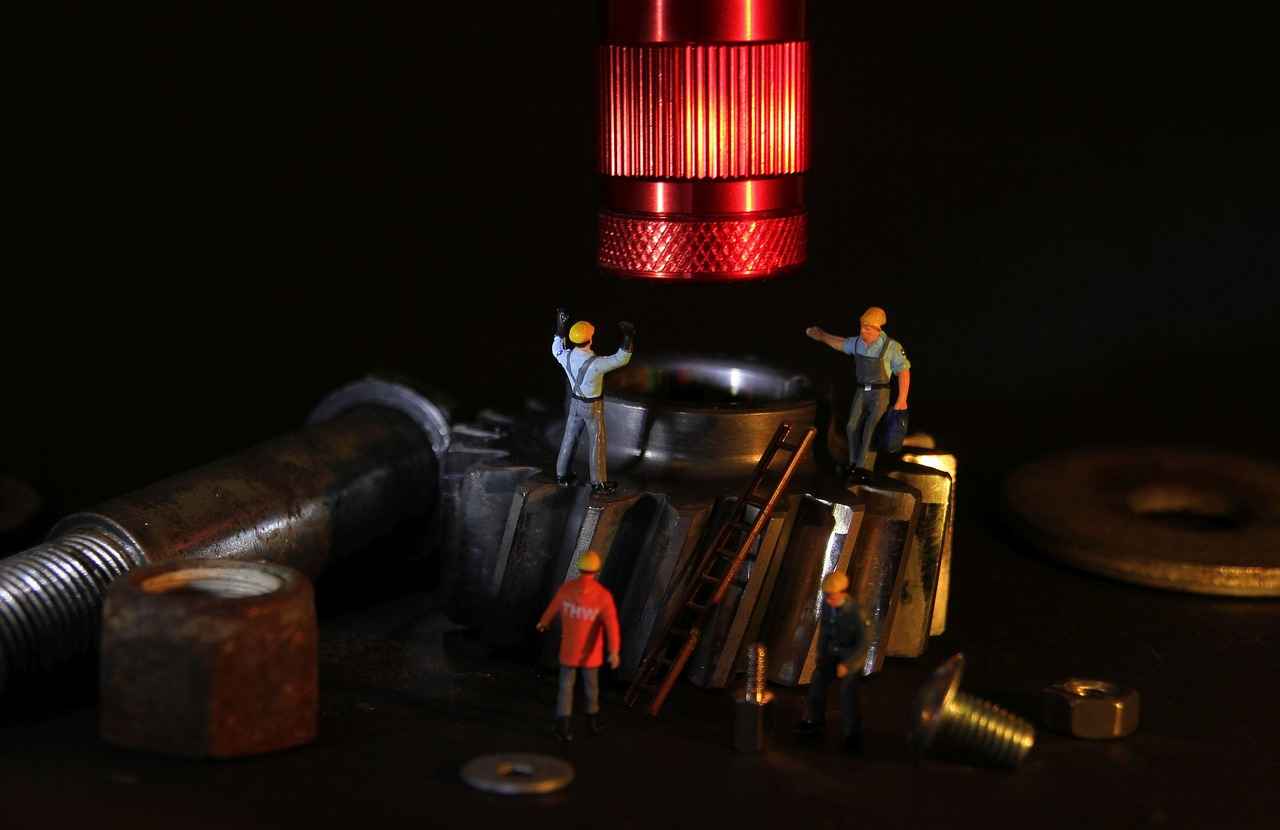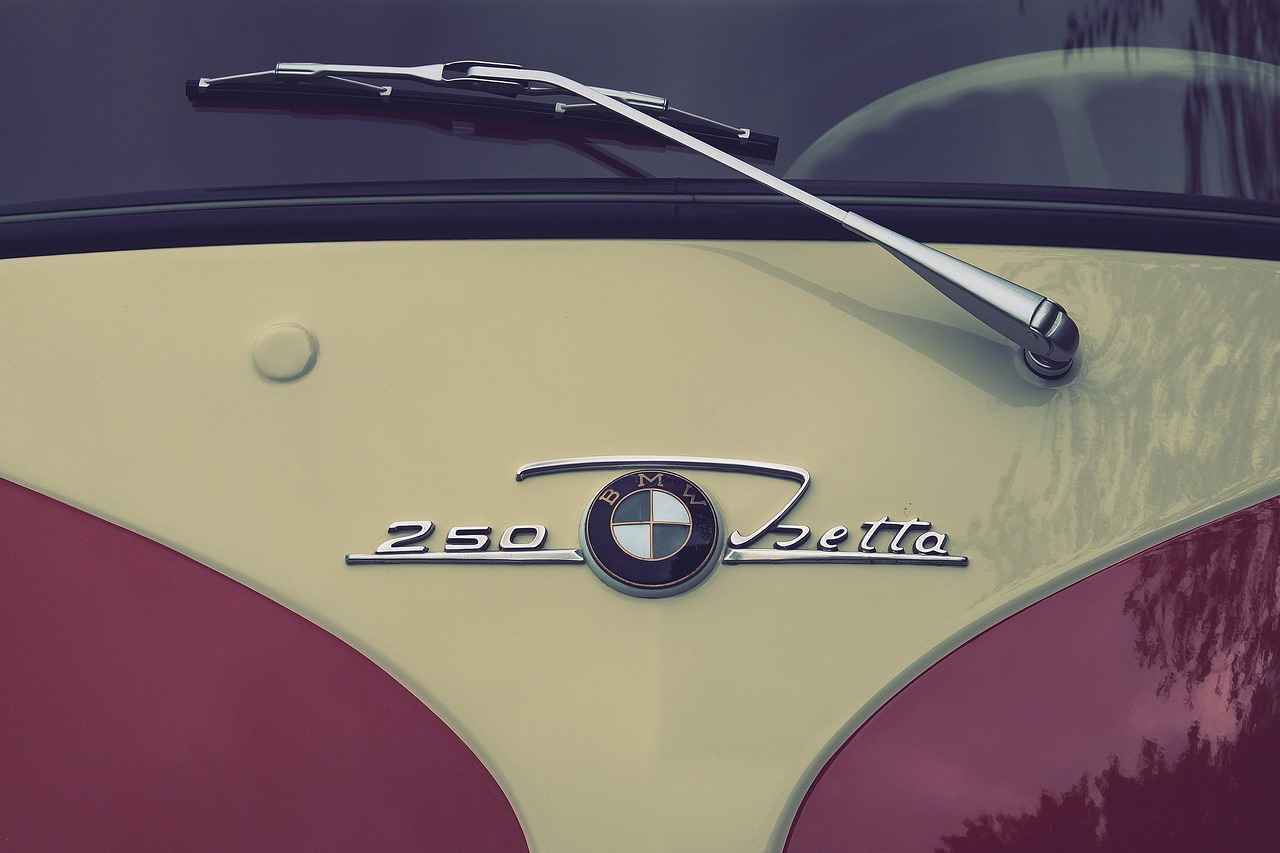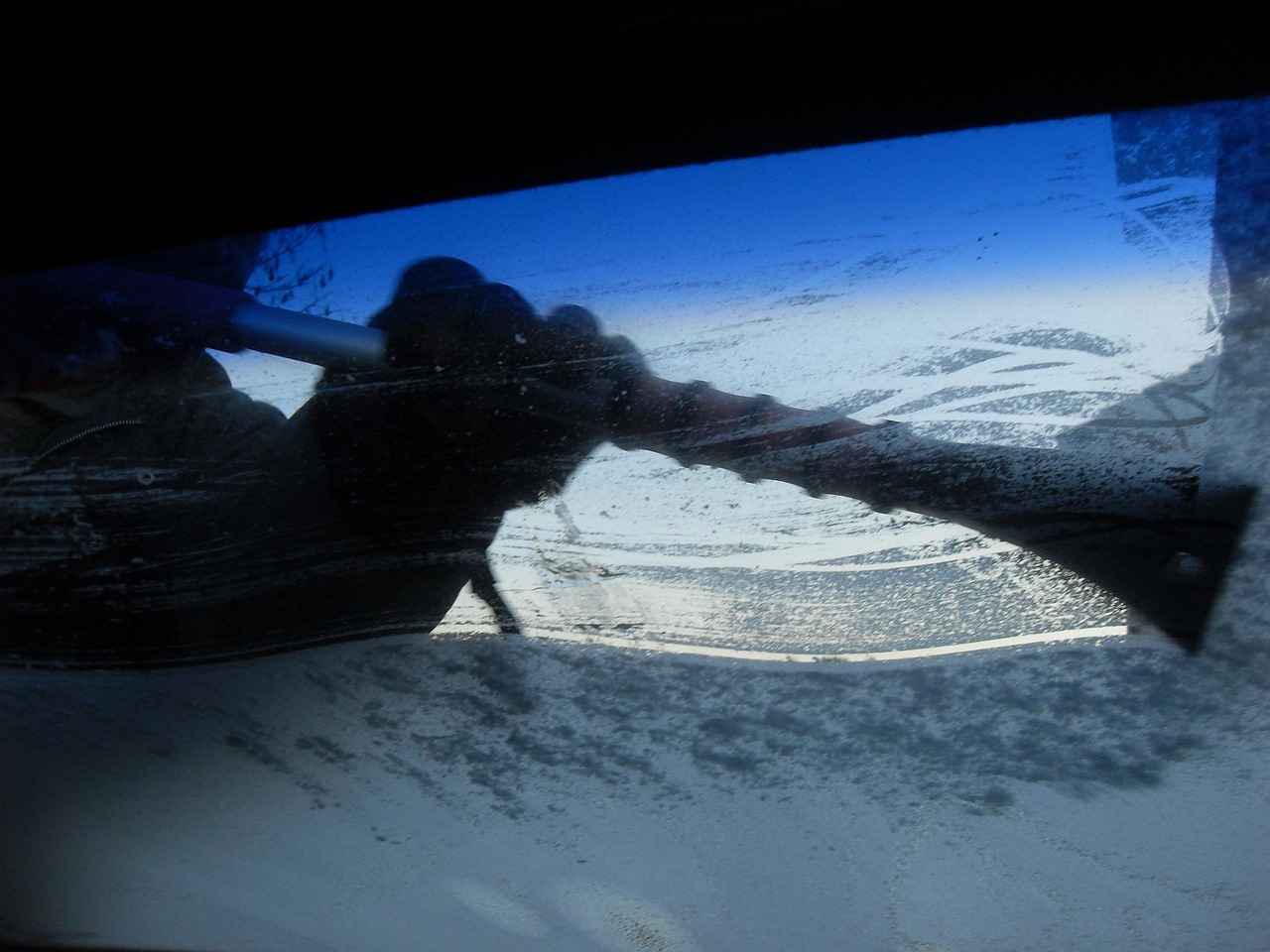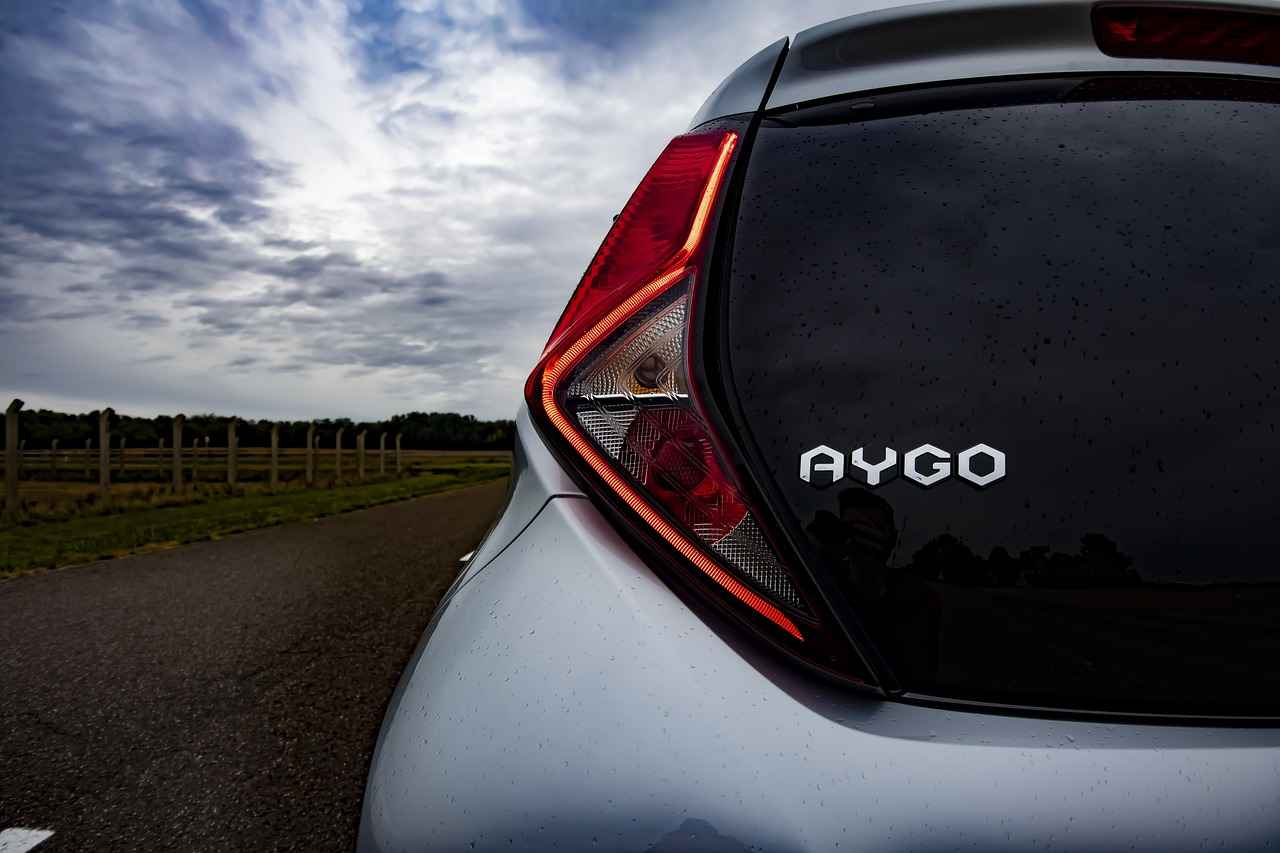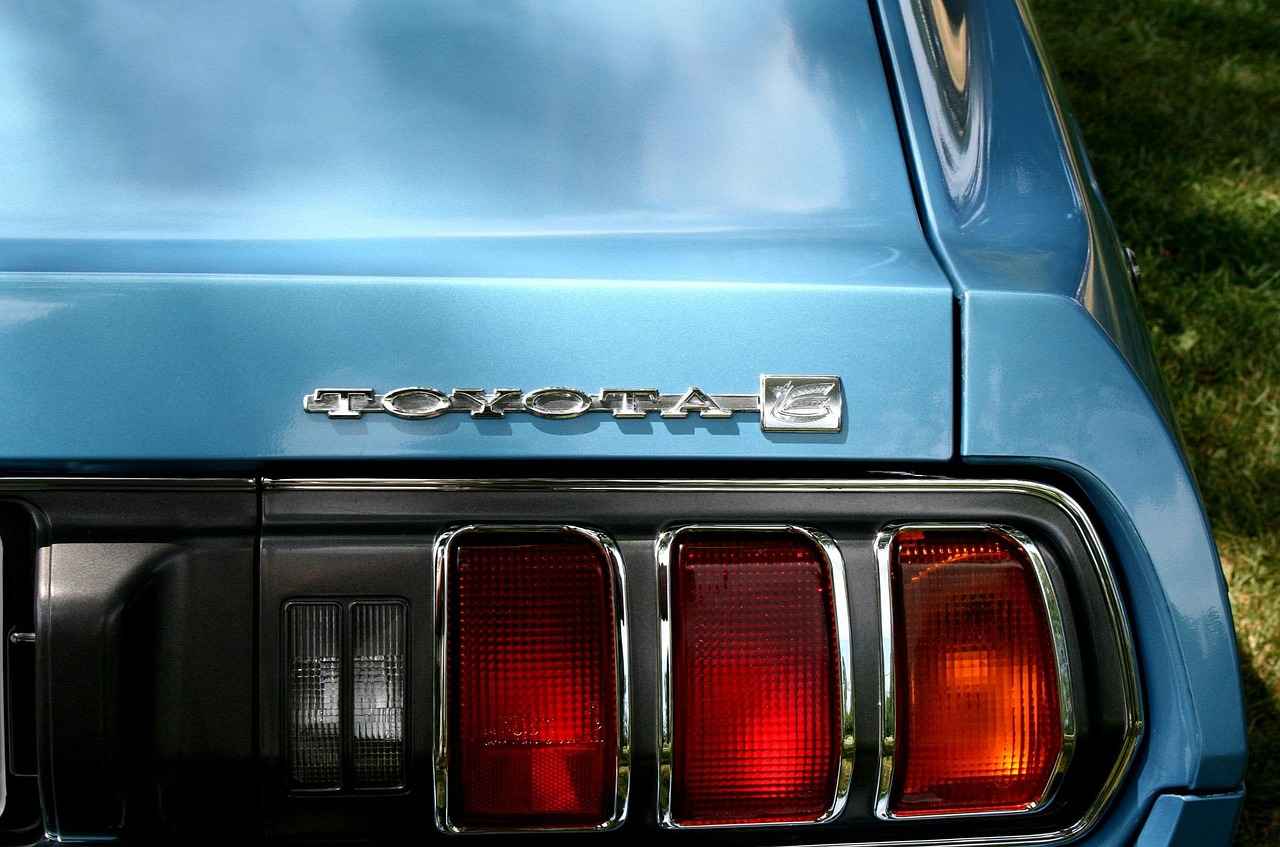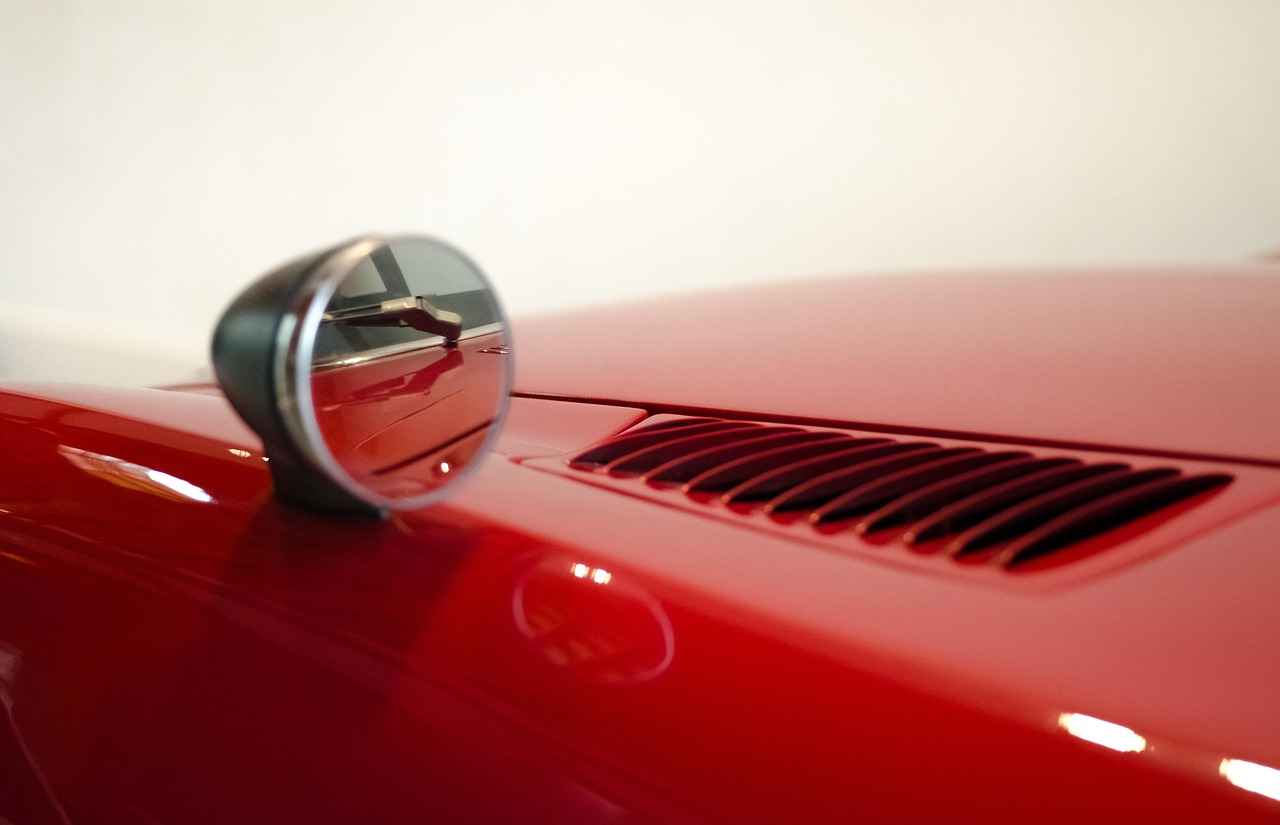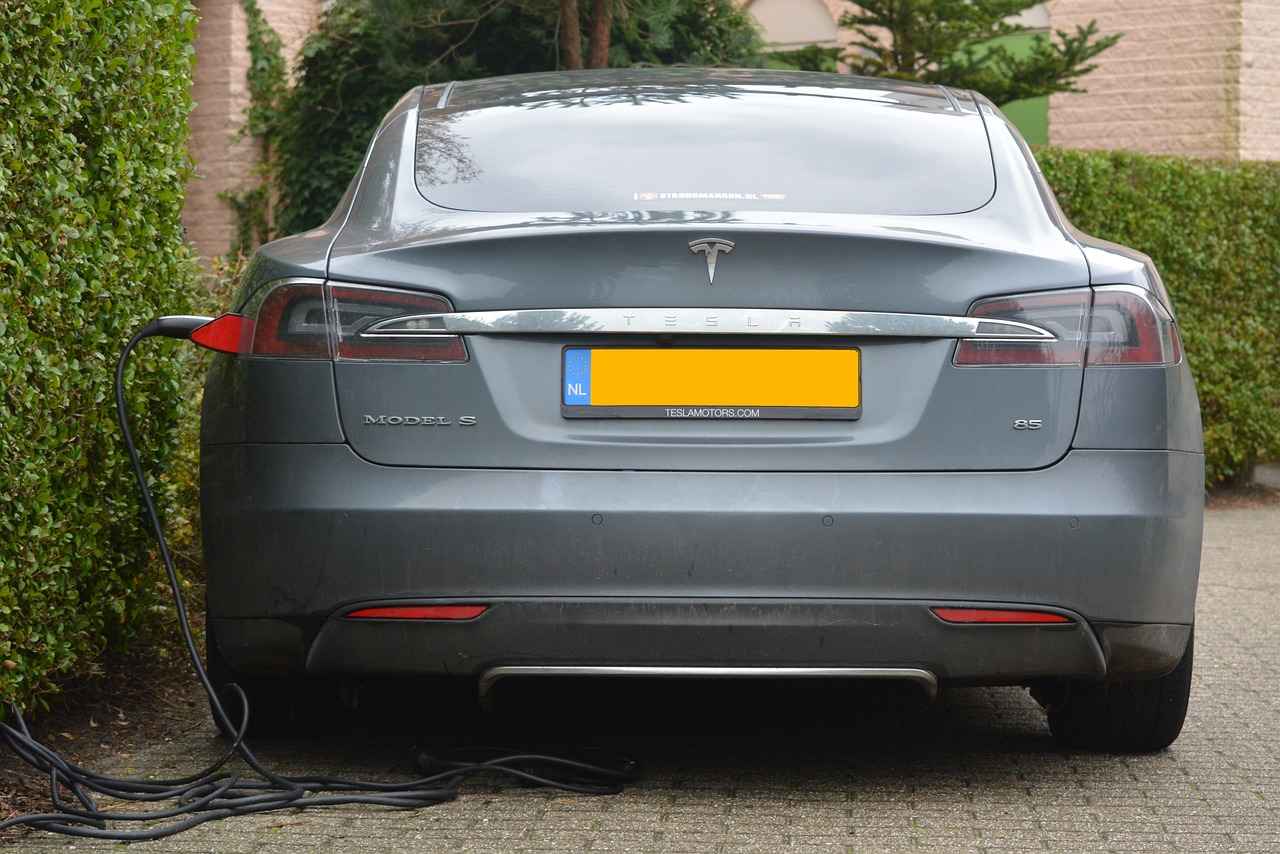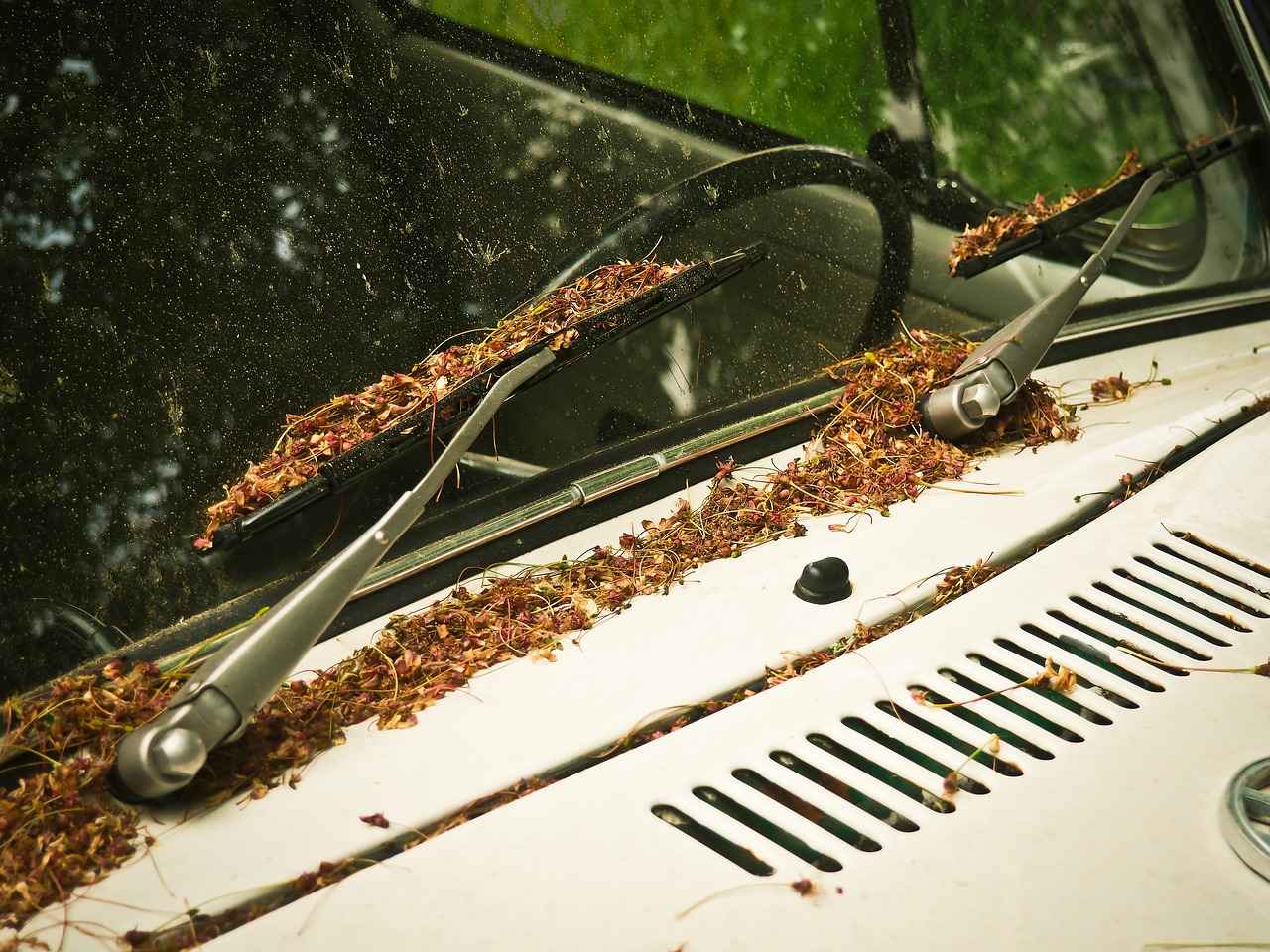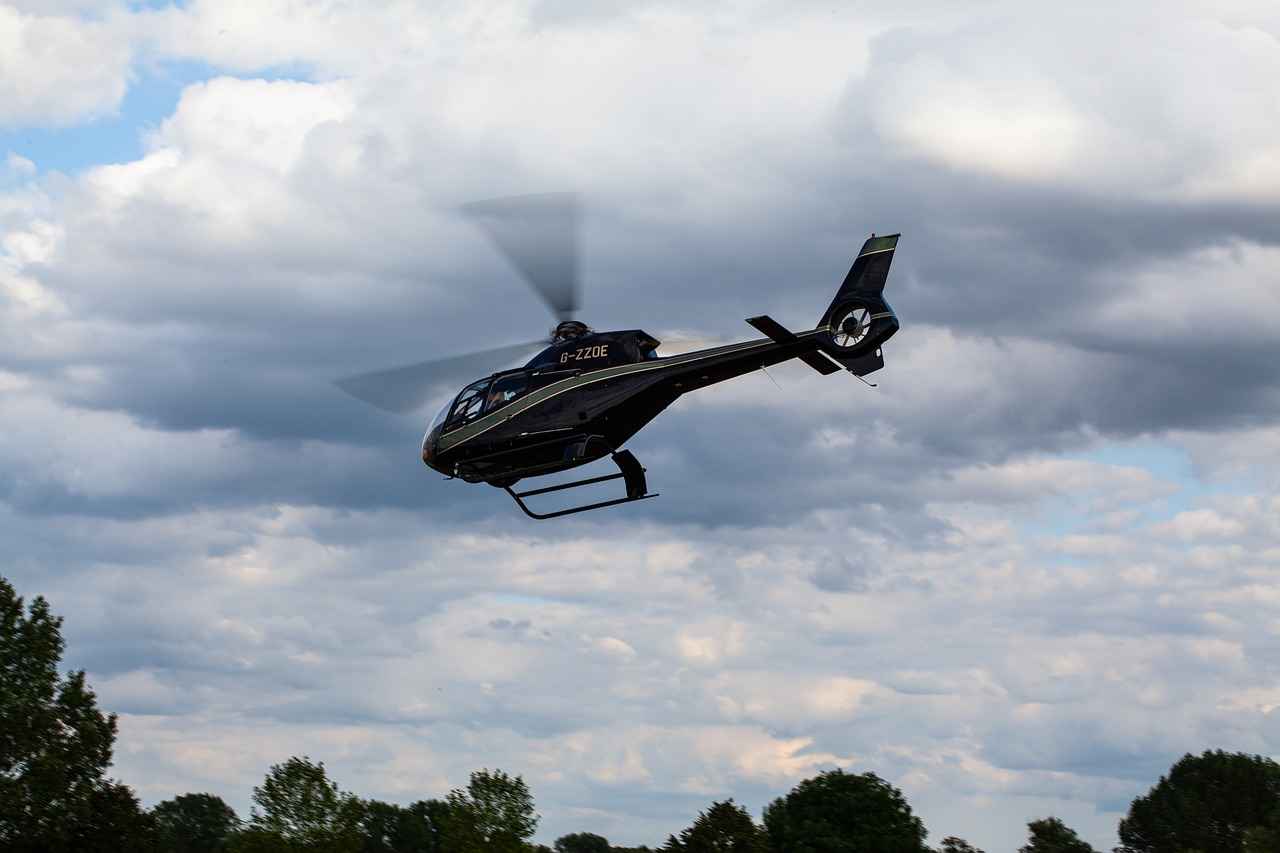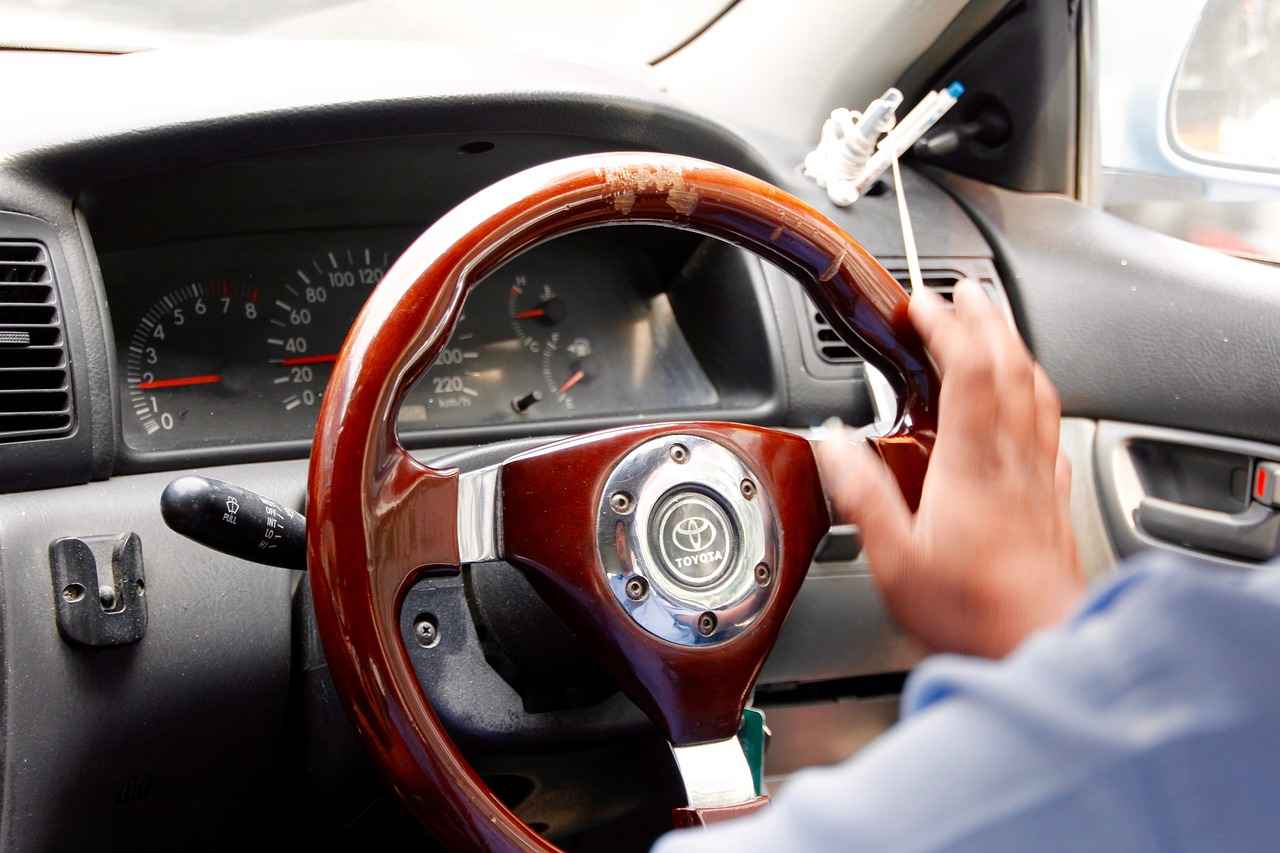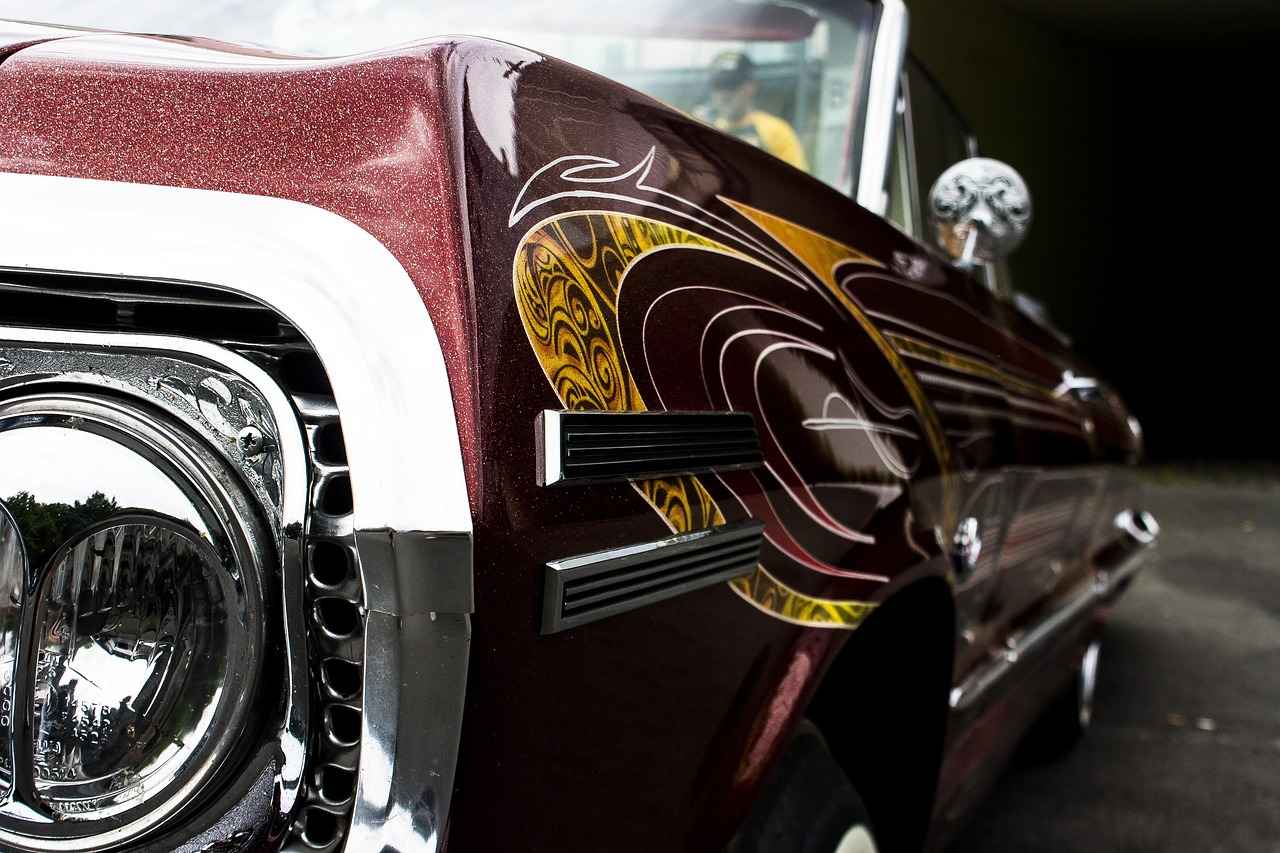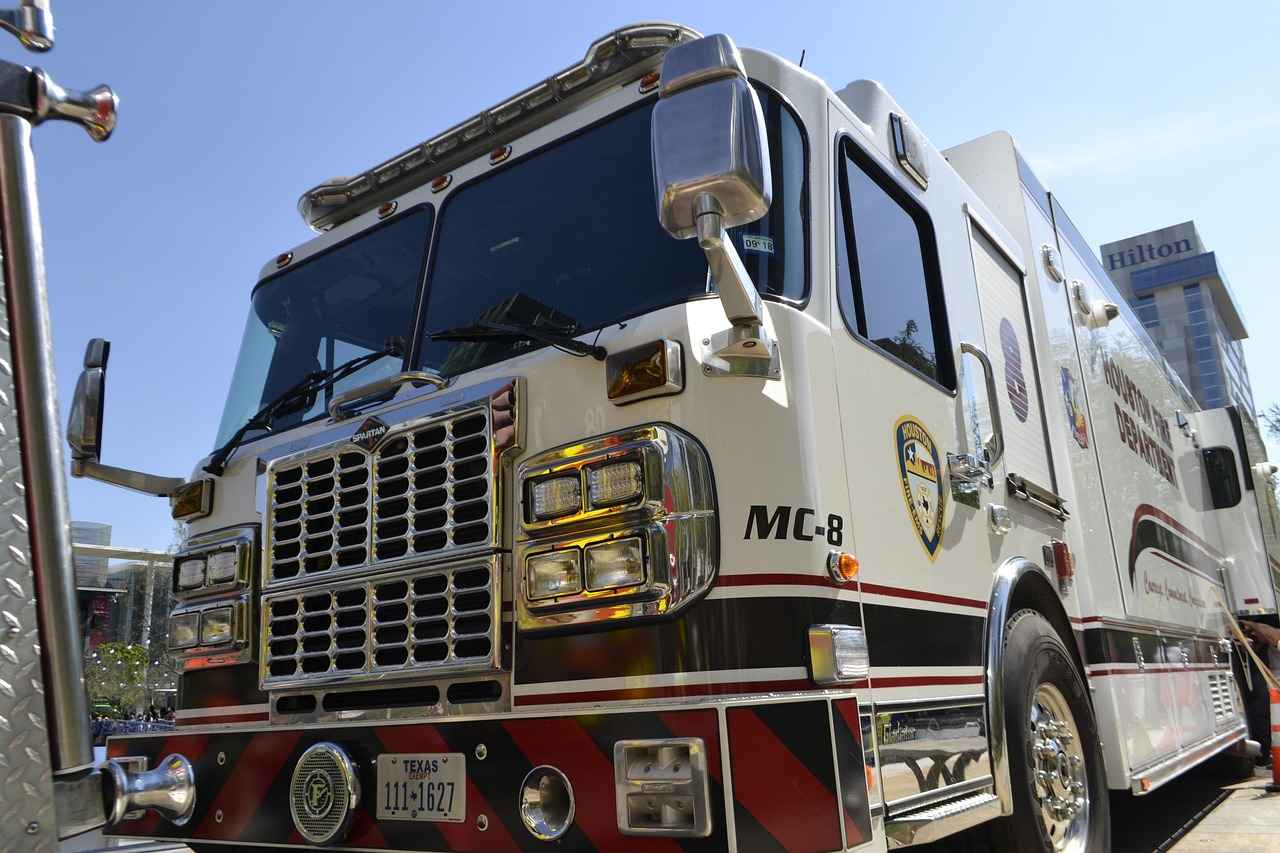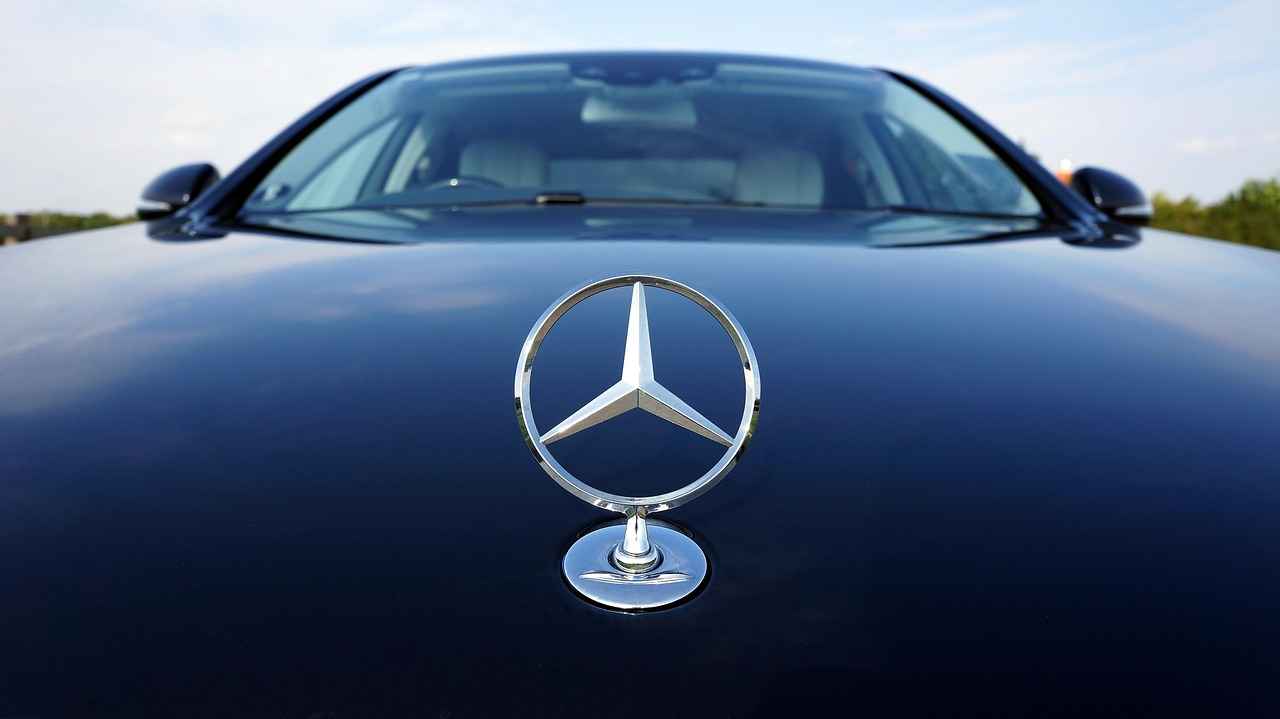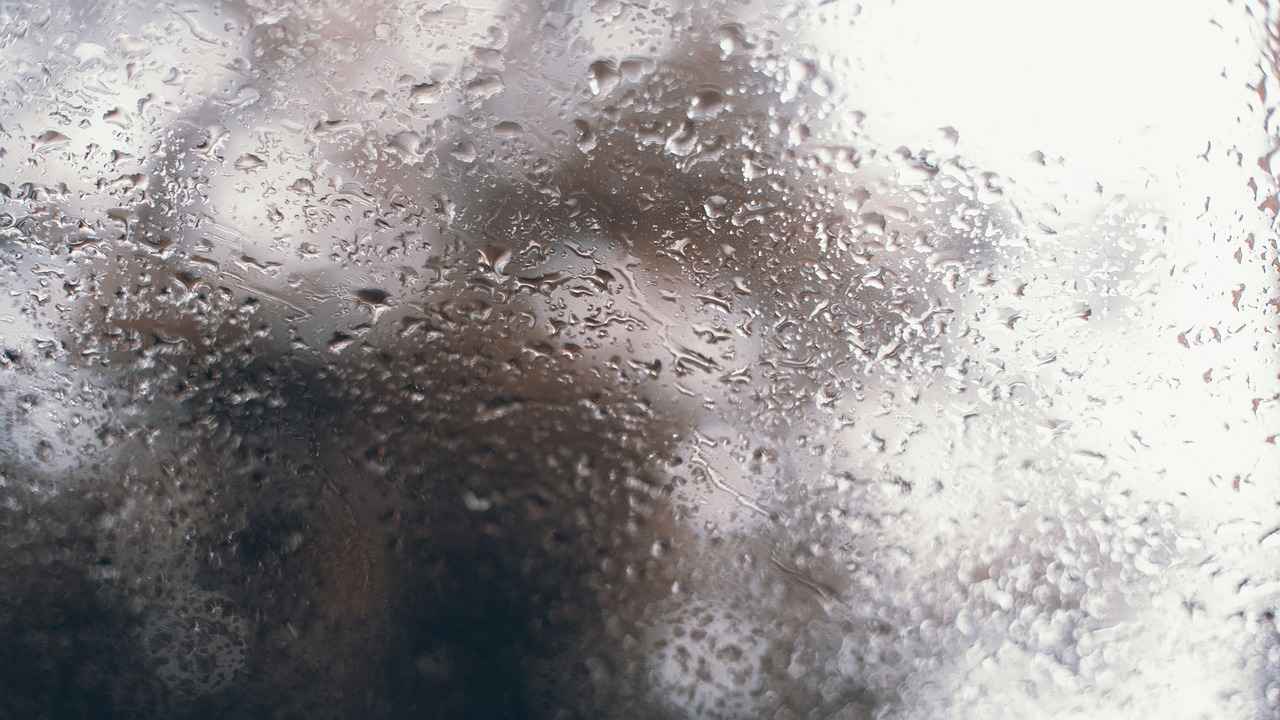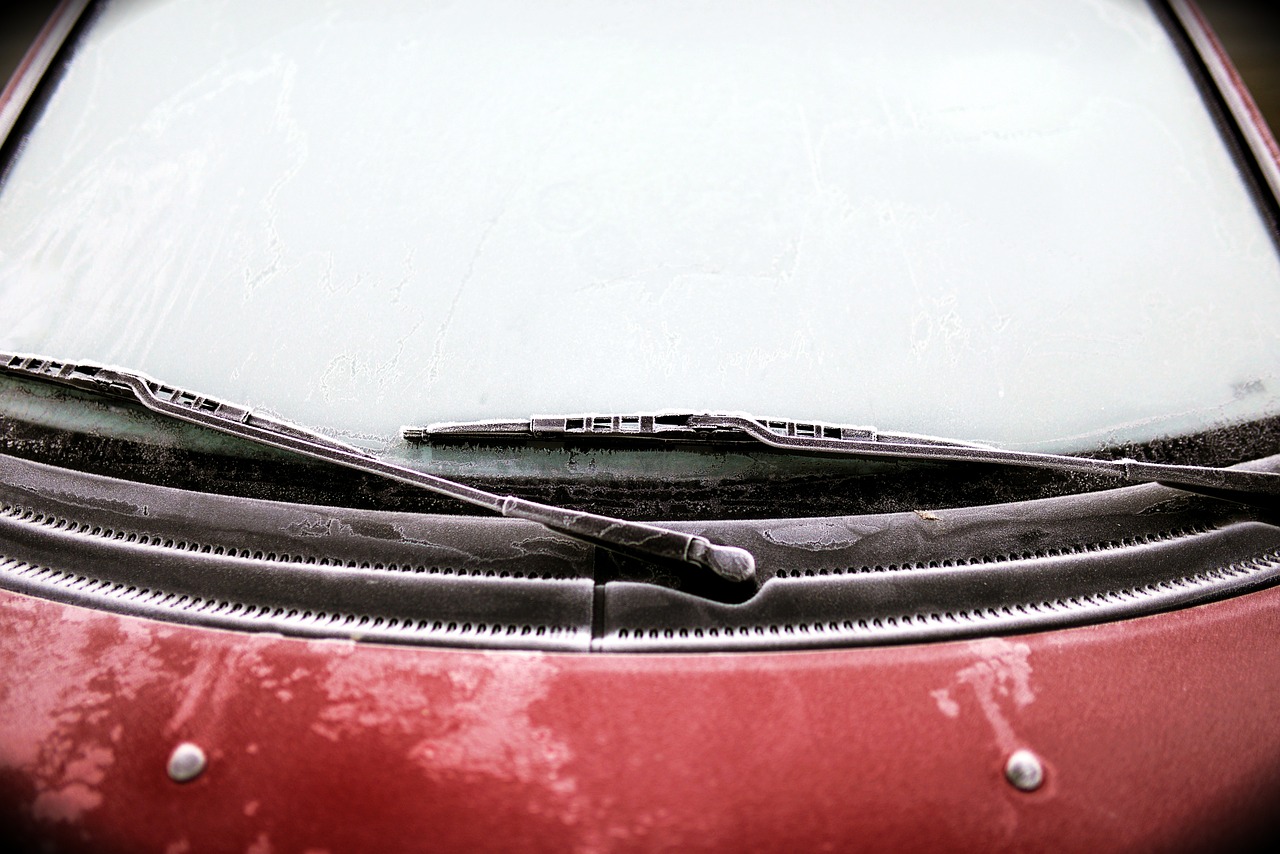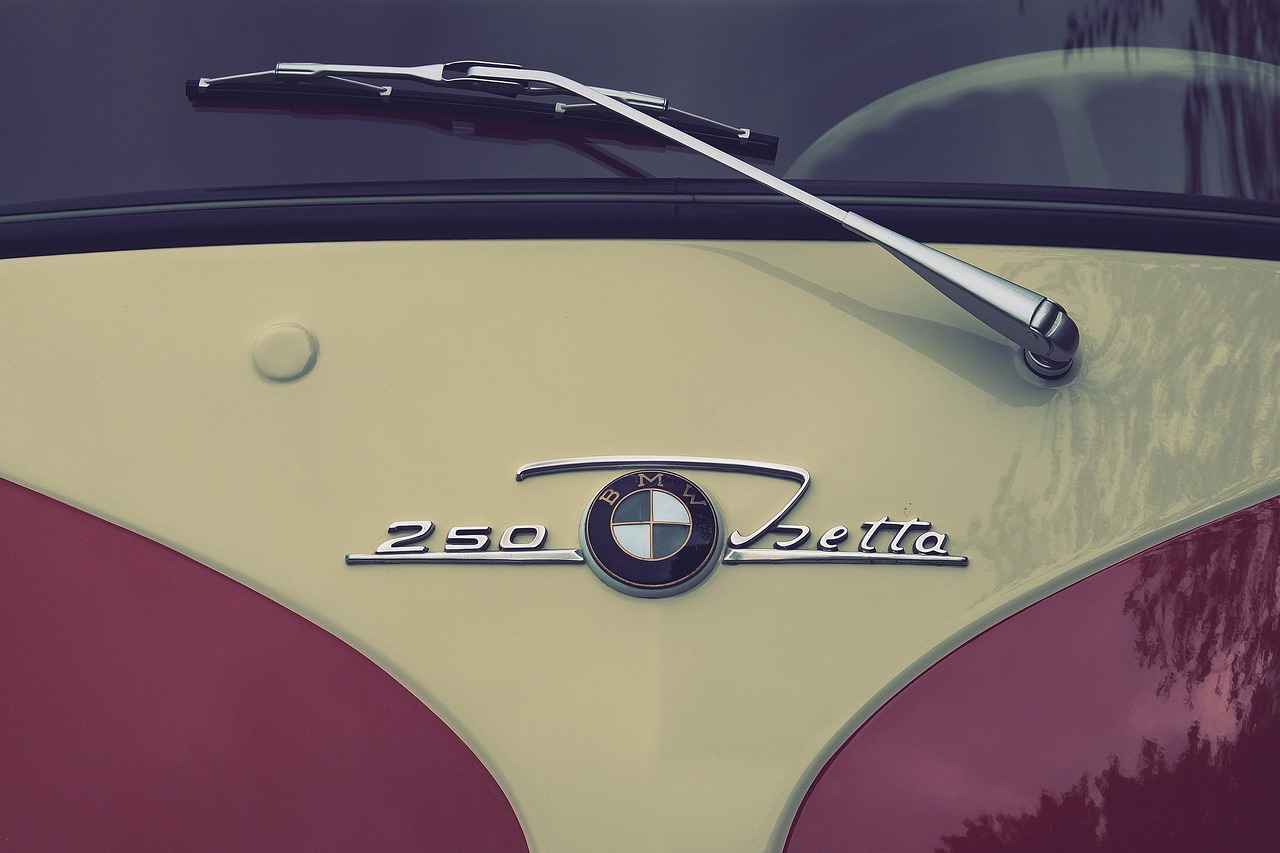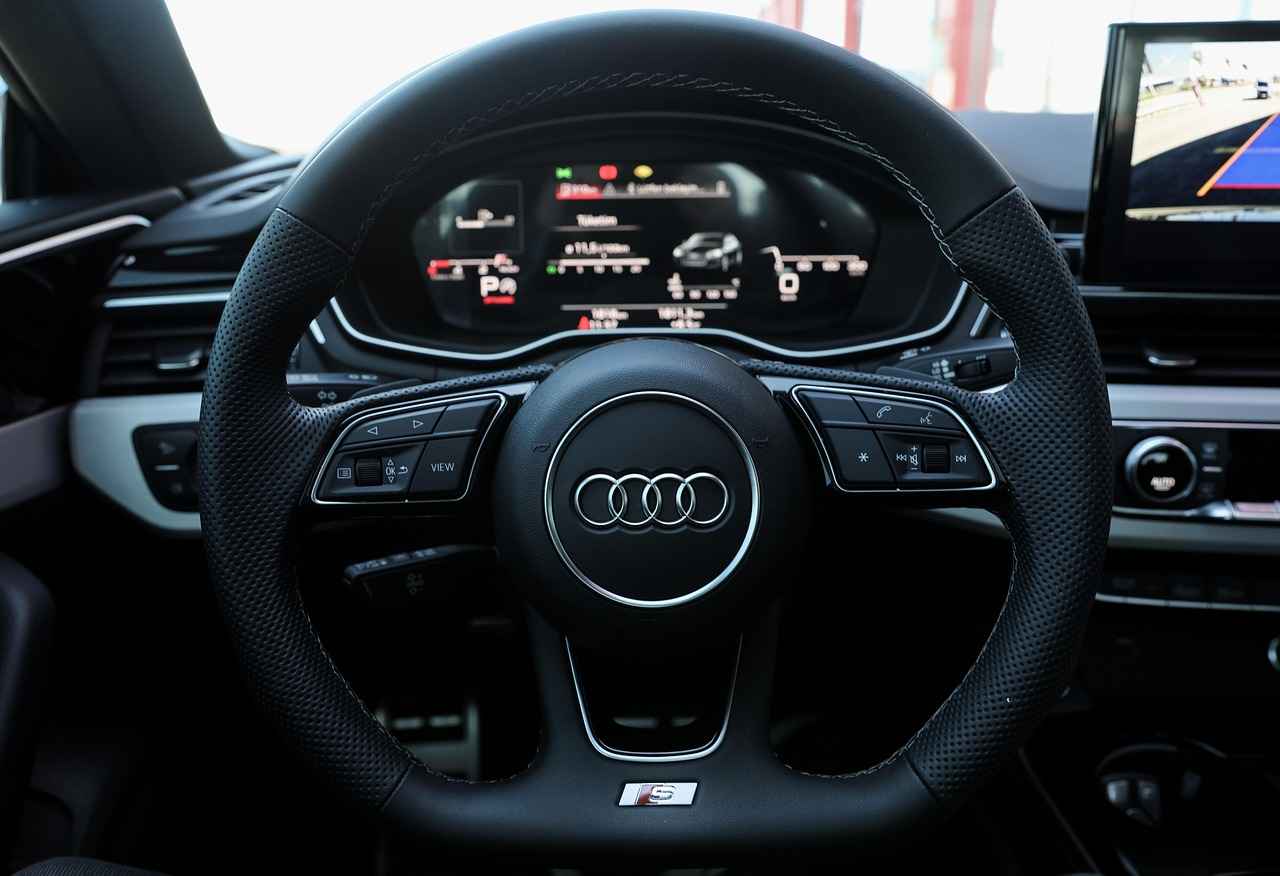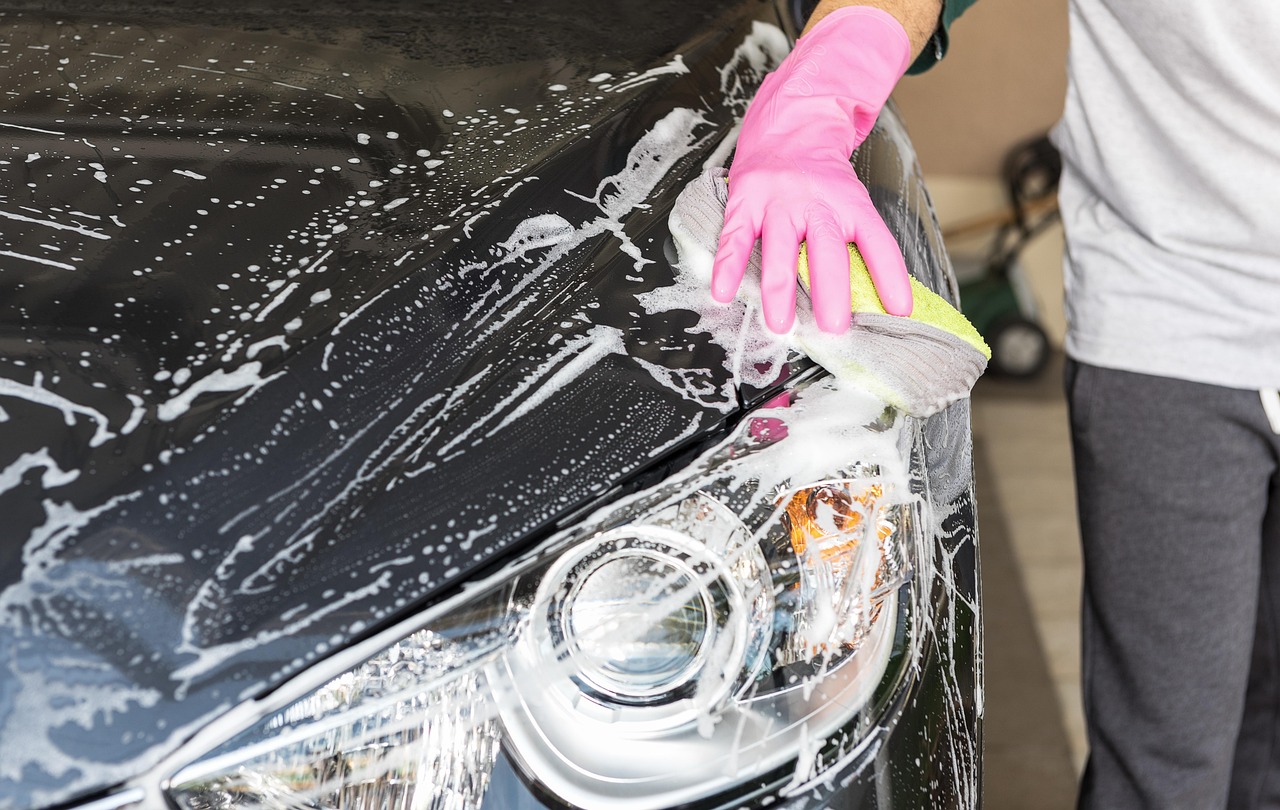Maintaining your vehicle’s windshield wipers is crucial for ensuring optimal visibility and safety while driving. Windshield wipers play a vital role in clearing rain, snow, and debris from your windshield, allowing for a clear view of the road ahead. However, many drivers often overlook the importance of regular maintenance and timely replacement of their wiper blades. This guide will explore how often you should replace your windshield wipers, signs that indicate it’s time for a replacement, and tips for ensuring your wipers are functioning at their best.
Experts recommend that windshield wipers should be replaced every 6 to 12 months. However, the exact timing can depend on several factors, including your location, driving conditions, and the frequency of use. For instance, if you live in an area with harsh weather conditions, such as heavy rain or snow, you may need to replace your wipers more frequently. Regularly checking your wipers can help you maintain clear visibility and avoid dangerous driving situations.
It’s essential to recognize the signs that your windshield wipers need replacing. Here are some common indicators:
- Streaking: If your wipers leave streaks on the windshield, it may be time for new blades.
- Skipping: Wipers that skip or chatter across the glass are not making proper contact and should be replaced.
- Noises: Unusual sounds when the wipers are in use can indicate wear and tear.
Streaking is often a sign that the rubber on the wiper blade is worn or damaged. This can significantly obstruct your view during rain, making it imperative to replace the blades promptly. Regular inspections can help you catch these issues before they become serious.
Several factors can contribute to the deterioration of wiper blades:
- Sun Exposure: Prolonged exposure to sunlight can cause the rubber to crack and degrade.
- Extreme Temperatures: Both hot and cold weather can affect the flexibility and effectiveness of the blades.
- Frequent Use: Regular use in adverse weather conditions can accelerate wear.
To maximize the lifespan of your windshield wipers, consider the following tips:
- Regular Cleaning: Clean your windshield and wiper blades frequently to remove dirt and debris.
- Use Protective Treatments: Applying a protective treatment to your windshield can help reduce wear on the blades.
If your wipers are skipping across the windshield instead of gliding smoothly, it’s a clear sign that they need to be replaced. Skipping can lead to reduced visibility, particularly in rain, which can be dangerous while driving.
Selecting the appropriate wiper blades is essential for effective performance. When choosing wiper blades, consider:
- Size: Consult your owner’s manual or online resources to find the correct size for your vehicle.
- Type: Decide between conventional and beam blades based on your driving conditions.
- Brand Reputation: Opt for reputable brands known for quality and durability.
Investing in premium wiper blades can offer enhanced performance and durability compared to standard options. These blades often provide better visibility and can last longer, especially in harsh weather conditions, making them a worthwhile investment for your safety.

How Often Should You Replace Your Windshield Wipers?
Maintaining clear visibility while driving is essential for safety, especially during adverse weather conditions. One of the most critical components of your vehicle’s safety system is the windshield wipers. Understanding how often to replace your windshield wipers is vital to ensure they function effectively when you need them the most. Experts suggest that you should consider replacing your wipers every 6 to 12 months, but this can vary based on usage and environmental factors.
The lifespan of windshield wipers can be influenced by several factors:
- Climate: Areas with extreme temperatures or frequent rain can wear wipers down more quickly.
- Usage: Frequent use of wipers, especially in heavy rain or snow, can lead to faster deterioration.
- Quality of Wipers: Higher-quality blades may last longer than cheaper alternatives.
Being aware of the signs that your windshield wipers need replacing can prevent dangerous driving conditions:
- Streaking: If your wipers leave streaks across the windshield, the rubber may be worn out.
- Skipping: Wipers that skip or chatter can indicate that they are not making proper contact with the glass.
- Noises: Unusual sounds during operation might suggest that the blades are damaged.
To maximize the lifespan of your windshield wipers, consider the following tips:
- Regular Cleaning: Clean your windshield and wiper blades regularly to remove dirt and debris.
- Use a Windshield Treatment: Applying a protective treatment can help reduce wear from environmental factors.
- Store Your Vehicle Properly: Whenever possible, park your car in a garage or shaded area to protect the wipers from the sun.
Selecting the correct wiper blades is crucial for optimal performance. Here’s what to consider:
- Size: Refer to your owner’s manual or manufacturer guidelines to find the appropriate size for your vehicle.
- Type: Decide between conventional and beam blades based on your needs and driving conditions.
- Brand Reputation: Opt for brands known for quality and reliability.
Investing in premium wiper blades can offer several advantages:
- Enhanced Performance: Premium blades often provide better visibility in harsh weather.
- Durability: They are typically designed to last longer than standard options.
- Advanced Features: Many premium blades come with features such as wind spoilers and better aerodynamics.
In conclusion, understanding the importance of regular windshield wiper maintenance, recognizing the signs of wear, and selecting the right blades can significantly enhance your driving safety. By following these guidelines, you can ensure that your windshield wipers provide clear visibility when you need it the most.

What Signs Indicate It’s Time for a Replacement?
When it comes to ensuring your safety on the road, maintaining your windshield wipers is often overlooked. However, recognizing the signs that your windshield wipers need replacing can significantly enhance your driving experience and prevent hazardous situations. In this section, we will explore the various indicators that suggest it’s time for a replacement.
Windshield wipers are essential for maintaining visibility during inclement weather. If you notice any of the following signs, it may be time to consider replacing your wipers:
- Streaking: If your wipers leave streaks on your windshield, it indicates that the rubber has become worn or damaged. This can obstruct your view, particularly during heavy rain, making it crucial to replace the blades.
- Skipping: Wipers that skip across the glass instead of moving smoothly can compromise your visibility. This issue often arises when the wiper blades lose their shape or the rubber hardens due to age.
- Noisy Operation: Unusual noises, such as squeaking or grinding, when the wipers are in motion can indicate that the blades are not making proper contact with the windshield. This can lead to further wear and should be addressed immediately.
- Cracks or Tears: A visual inspection of your wiper blades can reveal cracks or tears in the rubber. These imperfections can prevent the blades from functioning effectively and should prompt a replacement.
- Discoloration: If the rubber on your wipers appears faded or discolored, it may be a sign of deterioration. This can reduce the effectiveness of the blades and compromise your safety.
Being proactive about replacing your windshield wipers can prevent dangerous driving conditions. Regular inspections, especially before the rainy season or winter months, can help you identify these signs early. If you notice any of the above indicators, it’s advisable to replace your wipers promptly.
Additionally, environmental factors can accelerate the wear and tear of your wiper blades. For instance, exposure to sunlight, extreme temperatures, and the accumulation of dirt and debris can all contribute to the degradation of the rubber. Therefore, it’s essential to consider your local climate and driving conditions when assessing the state of your wipers.
To ensure optimal performance, it’s recommended to replace your windshield wipers every 6 to 12 months. However, if you frequently drive in harsh weather conditions, you may need to replace them more often. Regular maintenance not only enhances visibility but also contributes to overall driving safety.
In summary, being aware of the signs that indicate your windshield wipers need replacing is crucial for maintaining clear visibility and safe driving conditions. By regularly inspecting your wipers and replacing them as needed, you can ensure that you are always prepared for whatever weather may come your way.
Are Your Wipers Leaving Streaks?
When driving in rainy conditions, having clear visibility is crucial for safety. One of the key components that ensure this visibility is your vehicle’s windshield wipers. If you’ve noticed that your wipers are leaving streaks on the glass, it’s a clear sign that something is amiss. Understanding the implications of streaking wipers is essential for maintaining optimal driving conditions.
Streaking is often an indicator that the rubber on your wiper blades has become worn out or damaged. This degradation can occur due to various factors, including exposure to sunlight, extreme weather conditions, and regular usage. When the rubber loses its effectiveness, it fails to make proper contact with the windshield, leading to streaks that can obstruct your view during rain.
Driving with streaking wipers can be hazardous. When rainwater is not effectively cleared from your windshield, it can create dangerous driving conditions, especially at night or during heavy downpours. The inability to see clearly can increase the risk of accidents and reduce your overall safety on the road. Therefore, it is essential to replace worn wiper blades promptly.
- Visual Inspection: Check for cracks, tears, or any visible wear on the rubber blades.
- Performance Test: Activate the wipers and observe their movement. If they skip or leave streaks, they need replacement.
- Check the Frame: Ensure that the wiper arm is not bent or damaged, as this can also affect performance.
Several environmental factors contribute to the wear and tear of wiper blades:
- Sun Exposure: UV rays can break down the rubber material over time.
- Extreme Temperatures: Both heat and cold can cause the rubber to harden or crack.
- Debris: Dust, dirt, and other particles can accumulate on the blades, leading to ineffective cleaning.
Experts recommend replacing windshield wipers every 6 to 12 months, depending on usage and environmental conditions. Regular inspections can help identify when it’s time for a replacement, ensuring that your wipers are always in optimal condition.
Yes, there are several maintenance tips that can help prolong the lifespan of your wiper blades:
- Regular Cleaning: Clean both the windshield and the blades to remove dirt and debris.
- Use a Protective Treatment: Applying a windshield treatment can help protect against environmental damage.
- Store Properly: If your vehicle is parked for an extended period, ensure that the wipers are not in contact with the windshield to prevent deformation.
While standard wiper blades may suffice for regular conditions, premium wiper blades offer enhanced performance and durability. If you frequently drive in harsh weather or need superior visibility, investing in high-quality wiper blades can be beneficial. They often feature advanced materials that resist wear and provide better contact with the windshield.
In summary, if your wipers are leaving streaks, it is critical to address the issue promptly. Regular maintenance and timely replacements will not only improve your visibility but also enhance your overall safety while driving.
What Causes Wiper Blades to Wear Out?
Windshield wipers are essential for maintaining clear visibility while driving, particularly during adverse weather conditions. However, many drivers overlook the importance of regularly inspecting and replacing their wiper blades. Understanding what causes wiper blades to wear out is crucial for ensuring safety on the road.
Several environmental and usage factors can lead to the deterioration of windshield wipers over time. Here are some of the most significant:
- Sun Exposure: Prolonged exposure to the sun’s UV rays can cause the rubber on wiper blades to crack and degrade. This is particularly common in regions with high temperatures and intense sunlight.
- Extreme Temperatures: Both heat and cold can adversely affect wiper blades. In cold climates, the rubber can become stiff and less flexible, while heat can cause it to become brittle.
- Frequent Use: Regular use of windshield wipers, especially during heavy rain or snow, can accelerate wear. The constant friction against the windshield can wear down the rubber material.
- Contaminants: Dirt, debris, and other contaminants on the windshield can scratch the wiper blades, leading to reduced effectiveness and increased wear.
Recognizing the signs of wear is crucial for maintaining safety. Here are some common indicators that it might be time for a replacement:
- Streaking: If your wipers leave streaks on the windshield, this indicates that the rubber has worn out and is no longer making effective contact.
- Skipping: Wipers that skip or chatter across the windshield can hinder visibility. This often suggests that the blades have lost their shape or flexibility.
- Noisy Operation: If your wipers make unusual noises while operating, it may be a sign of wear or damage.
Conducting regular inspections of your wiper blades can help identify wear before it becomes a safety issue. Experts recommend checking your wipers at least once a month, especially before the rainy or snowy seasons. Look for any visible signs of wear, such as cracks or tears in the rubber.
To prolong the life of your windshield wipers, consider the following tips:
- Keep Your Windshield Clean: Regularly cleaning your windshield and wiper blades can help reduce wear caused by dirt and grime.
- Use a Protective Treatment: Applying a windshield treatment can help protect against UV rays and other environmental factors.
- Store Your Vehicle Properly: If possible, park your vehicle in a garage or shaded area to minimize sun exposure.
By understanding the factors that contribute to wiper blade wear and taking proactive steps, you can ensure that your windshield wipers remain effective and reliable. Regular maintenance not only enhances visibility but also contributes to overall driving safety.
How Can You Extend the Life of Your Wipers?
Maintaining your windshield wipers is essential for ensuring clear visibility while driving. Regular care not only enhances performance but also significantly extends the lifespan of your wipers. In this section, we will explore effective methods to extend the life of your wipers and ensure they function optimally.
One of the easiest ways to prolong the life of your windshield wipers is through regular cleaning. Dirt, grime, and debris can accumulate on both the windshield and the wiper blades, leading to decreased effectiveness. To clean your wipers:
- Lift the wiper arms away from the windshield.
- Use a soft cloth or sponge with a mild detergent solution to wipe the rubber blades.
- Rinse with water and dry thoroughly.
By incorporating this simple cleaning routine into your car maintenance, you can help prevent wear and tear.
In addition to regular cleaning, applying a protective windshield treatment can further enhance the durability of your wipers. These treatments create a barrier against environmental elements such as:
- UV rays that can cause the rubber to deteriorate.
- Extreme temperatures that can lead to cracking.
- Acid rain and other pollutants that can damage the wiper material.
Many automotive supply stores offer these protective treatments, which can be easily applied by following the manufacturer’s instructions.
Regular inspections of your wipers can help identify potential issues before they escalate. Look for signs of wear, such as:
- Cracks or splits in the rubber.
- Frayed edges that may compromise performance.
- Discoloration, which can indicate UV damage.
Addressing these issues promptly can prevent further damage and ensure your wipers remain effective.
When you are not using your vehicle for extended periods, consider how you store your wipers. Keeping them in an environment that is cool and dry can prevent premature wear. Avoid leaving your car in direct sunlight for long durations, as this can lead to rubber degradation.
Understanding how to use your windshield wipers correctly can also extend their life. Avoid using them on a dry windshield, as this can cause unnecessary friction and wear. Instead, ensure that the windshield is wet before activating the wipers.
Investing in high-quality wiper blades can significantly affect their lifespan. Premium blades are designed to withstand harsher conditions and typically have better materials that resist wear. When selecting new wiper blades, consider:
- Brand reputation
- Material quality
- Design features that enhance performance
By paying attention to these factors, you can ensure that your wipers will last longer and perform better in adverse weather conditions.
In conclusion, extending the life of your windshield wipers involves a combination of regular cleaning, protective treatments, and proper usage. By implementing these strategies, you can maintain clear visibility and enhance safety while driving.
Is It Time for New Wipers If They Are Skipping?
When you notice that your windshield wipers are skipping across the glass instead of moving smoothly, it’s a clear indication that they may be due for replacement. This issue not only affects the performance of the wipers but can also significantly impair your visibility while driving, particularly during rain or adverse weather conditions. Understanding the underlying causes of this problem and knowing when to take action can enhance your safety on the road.
Wiper skipping can occur for several reasons, and recognizing these can help you address the issue promptly. Here are some common causes:
- Worn-Out Rubber Blades: Over time, the rubber on your wiper blades can wear down, leading to a rough surface that skips across the windshield.
- Improper Installation: If wipers are not installed correctly, they may not make proper contact with the glass, causing them to skip.
- Ice or Debris: Accumulated ice, dirt, or other debris on the windshield can prevent wipers from moving smoothly.
- Mechanical Issues: Problems with the wiper motor or linkage can also lead to skipping as they may not provide consistent pressure.
Driving with skipping wipers poses several risks:
- Reduced Visibility: Skipping wipers can create streaks or leave portions of the windshield uncleaned, which can obstruct your view.
- Increased Driver Fatigue: Constantly straining to see through streaks can lead to increased fatigue and distraction.
- Potential for Accidents: Poor visibility significantly raises the risk of accidents, especially during rain or snow.
Experts recommend replacing your windshield wipers every 6 to 12 months, depending on factors such as climate and frequency of use. Regular checks can help you identify signs of wear early, preventing dangerous driving conditions.
In addition to skipping, there are other signs that your wipers may need to be replaced:
- Streaking: If your wipers leave streaks on the windshield, it may indicate that the rubber has worn out.
- Unusual Noises: Squeaking or chattering noises during operation can signal that the blades are not functioning properly.
- Visible Damage: Cracks or tears in the rubber blades are clear indicators that it’s time for a new set.
Selecting the correct wiper blades is essential for optimal performance. Here are some tips:
- Check Your Vehicle’s Manual: Refer to your owner’s manual for the correct size and type of wiper blades.
- Consider Blade Type: Decide between conventional and beam blades based on your driving conditions.
- Invest in Quality: Premium wiper blades may offer better durability and performance, especially in harsh weather.
In conclusion, if you notice your windshield wipers skipping, it’s crucial to address the issue promptly to ensure your safety on the road. Regular maintenance and timely replacement can lead to improved visibility and a safer driving experience.

How to Choose the Right Wiper Blades?
Choosing the right windshield wiper blades is essential for ensuring clear visibility and safe driving, especially during inclement weather. With various options available on the market, understanding the key factors involved in selecting wiper blades can make a significant difference in their performance. Below, we delve into the critical aspects to consider when making your choice.
- Size: The size of your wiper blades is crucial for proper fit and functionality. To find the right size, consult your vehicle’s owner manual or check online resources from manufacturers.
- Type: Wiper blades generally come in two main types: conventional and beam blades. Conventional blades have a metal frame and are often less expensive, while beam blades feature a sleek design and are typically more effective in heavy rain.
- Brand Reputation: Opting for wiper blades from reputable brands can enhance reliability and performance. Research customer reviews and expert recommendations to ensure you’re choosing a trusted product.
The type of wiper blade you choose can significantly impact your driving experience. Conventional blades are often more affordable but may not perform as well in extreme weather conditions. In contrast, beam blades provide a more consistent wipe and are less likely to skip or chatter, making them ideal for heavy rain or snow.
Finding the correct size wiper blades is vital for optimal performance. Most vehicles require different sizes for the driver and passenger sides. Always check your owner’s manual or utilize online tools provided by wiper manufacturers to ensure you select the correct sizes.
While premium wiper blades may come with a higher price tag, they often offer enhanced features such as improved durability and superior performance. These blades typically have advanced materials that resist wear and tear, providing better visibility and longevity, especially in harsh weather conditions.
Recognizing when it’s time to replace your wiper blades is essential for safety. Look out for the following signs:
- Streaking: If your wipers leave streaks on the windshield, it indicates that the rubber is worn out.
- Skipping: Wipers that skip or chatter across the glass are a clear sign of wear.
- Noisy Operation: Unusual sounds during operation, such as squeaking or grinding, can indicate that the blades are no longer effective.
Regular maintenance can extend the life of your wiper blades and ensure optimal performance. Here are some tips:
- Clean the Blades: Gently wipe the rubber part of the blades with a damp cloth to remove dirt and debris.
- Inspect Regularly: Check your wipers periodically for signs of wear, especially before and after harsh weather conditions.
- Replace When Necessary: Don’t wait for performance to degrade significantly. If you notice any signs of wear, consider replacing your wipers promptly.
In conclusion, selecting the right wiper blades involves understanding their size, type, and brand reputation. By considering these factors and maintaining your wiper blades, you can ensure optimal visibility and safety while driving.
What Size Wiper Blades Do You Need?
When it comes to maintaining your vehicle, selecting the correct size of windshield wiper blades is crucial for ensuring safety and visibility on the road. Using the appropriate size not only enhances performance but also guarantees optimal coverage across your windshield. Here’s how you can determine the right size for your vehicle.
Using the right size wiper blades is essential for several reasons:
- Optimal Coverage: Properly sized blades ensure that every part of your windshield is cleared of water, dirt, and debris.
- Enhanced Performance: Wipers that are too short may leave areas uncleaned, while those that are too long can cause damage to your windshield or the wiper mechanism.
- Safety: Clear visibility is vital for safe driving, especially in adverse weather conditions.
There are several methods to find the correct size of wiper blades:
- Consult Your Owner’s Manual: This is the most reliable source for information regarding your vehicle’s specifications. The manual will typically list the recommended sizes for both the driver and passenger side blades.
- Online Tools: Many wiper manufacturers offer online size finders. By entering your vehicle’s make, model, and year, you can easily find the correct blade sizes.
- Visit an Auto Parts Store: If you’re unsure, you can visit a local auto parts store where staff can assist you in finding the right size blades for your vehicle.
Using incorrectly sized wiper blades can lead to several issues:
- Reduced Visibility: If the blades are too short, they may not cover the entire windshield, leaving streaks or uncleaned areas.
- Increased Wear: Blades that are too long may not fit snugly against the windshield, leading to uneven wear and a shorter lifespan.
- Potential Damage: Improperly sized blades can cause damage to the wiper arm or the windshield itself, resulting in costly repairs.
Yes, when selecting wiper blades, you’ll encounter various types:
- Conventional Blades: These are the traditional frame-style blades that are often less expensive but may not perform as well in heavy rain.
- Beam Blades: These are designed for better performance and flexibility, conforming to the shape of the windshield for a more effective wipe.
- Hybrid Blades: Combining features of both conventional and beam blades, hybrids offer enhanced performance and durability.
While standard wiper blades may suffice, premium wiper blades often provide enhanced performance and durability. They are designed to withstand extreme weather conditions, offering better visibility and a longer lifespan. Investing in high-quality blades can be particularly beneficial if you frequently drive in harsh weather.
In conclusion, ensuring that you have the correct size windshield wiper blades is a key aspect of vehicle maintenance. By consulting your owner’s manual, utilizing online tools, or seeking help from auto parts professionals, you can easily determine the right size for your vehicle. Remember, the right blades not only improve visibility but also enhance your overall driving safety.
Should You Consider Premium Wiper Blades?
When it comes to maintaining your vehicle, the importance of windshield wipers cannot be overstated. They play a crucial role in ensuring clear visibility during inclement weather, which directly impacts your safety on the road. One significant choice that drivers face is whether to opt for premium wiper blades or stick with standard options. This article delves into the advantages of investing in high-quality wiper blades and why they may be worth the extra cost.
Premium wiper blades are designed using advanced materials and technology that enhance their performance. Unlike standard wipers, which may use basic rubber, premium options often incorporate durable silicone or other high-tech materials that resist wear and tear better. This means they can handle extreme weather conditions, including heavy rain, snow, and even ice.
- Enhanced Performance: Premium wiper blades provide superior visibility due to their design and materials. They conform better to the windshield, ensuring that water, snow, and debris are cleared effectively.
- Increased Durability: With a longer lifespan than standard blades, premium options can last significantly longer, reducing the frequency of replacements and ultimately saving you money.
- Better Noise Reduction: Many premium blades are designed to operate quietly, minimizing distracting sounds while driving.
In harsh weather conditions, the performance of your wiper blades becomes even more critical. Premium wiper blades are engineered to maintain their effectiveness even in extreme temperatures. They are less likely to freeze to the windshield in winter, and their hydrophobic properties can help repel water, ensuring a clearer view during rainstorms.
While premium wiper blades may come with a higher price tag, the benefits they provide often justify the cost. Consider the following:
- Safety: Enhanced visibility can prevent accidents caused by poor weather conditions.
- Convenience: Fewer replacements mean less hassle and time spent on maintenance.
- Long-Term Savings: Investing in higher-quality blades can save you money in the long run, as they typically last longer than standard options.
When selecting premium wiper blades, consider the following factors:
- Material: Look for blades made from high-quality silicone or rubber that offer durability and flexibility.
- Design: Beam blades generally provide better contact with the windshield compared to traditional frame-style blades.
- Brand Reputation: Choose well-reviewed brands known for their quality and performance.
In summary, while the initial investment in premium wiper blades may be higher, the advantages they offer in terms of performance, durability, and safety make them a worthwhile consideration for any driver. By ensuring that your wipers are up to the task, you can drive with confidence, knowing that you have the best possible visibility in all weather conditions.
Frequently Asked Questions
- How do I know when to replace my windshield wipers?
If your wipers are leaving streaks, skipping, or making unusual noises, it’s time for a replacement. Regular inspections can help catch these signs early, ensuring your visibility remains clear.
- Can I extend the life of my wiper blades?
Absolutely! Regularly cleaning your windshield and wiper blades can help. Additionally, using a protective windshield treatment can minimize wear from environmental factors.
- What size wiper blades do I need for my vehicle?
To find the right size, consult your owner’s manual or use online tools from wiper manufacturers. Using the correct size is essential for optimal performance and coverage.
- Are premium wiper blades worth the investment?
Yes! Premium wiper blades often provide better performance and durability, especially in harsh weather. Investing in high-quality blades can enhance your visibility and safety on the road.

